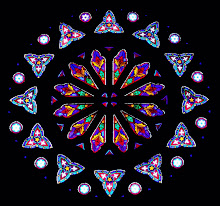
Like his contemporaries and predecessors, J. S. Bach used the soprano, alto and tenor clefs in all of his vocal compositions as well as in numerous instrumental works. The three ‘C’ clefs appear throughout the Cantatas, Masses, Passions and Motets. In the harpsichord and organ works, we encounter Bach’s use of soprano clef, not treble, in the right hand part. He also frequently wrote in the alto or tenor clefs for the inner voices in the organ music.
The first eight measures of a facsimile of the autograph of ‘Dir, dir, Jehova, will ich singen’, one of Bach’s hundreds of chorale harmonizations, is given above. Several features are worth noting. There is a large bow brace joining the four staves. Bar lines do not connect through the system. The key signatures for the soprano and bass voices involve pitches that are above their respective staves. Bach copied both lines of German text four times and assigned each pair of sentences a bow brace. The downward stems of half notes are drawn to the right of the note head. The eighth notes from measure 6 to 7 are beamed across the bar line. There is a thickening of ink in the tenor part in measure 5 and a few smudges above the tenor in measure 6. Not that it interferes in any way with the beauty of the autograph, it appears that the tool Bach used to create the 5-line staves was not calibrated properly: the first and fourth spaces are noticeably narrower than the two inner spaces on each staff. The staves, being hand drawn with the staff tool, are not always straight and parallel.
Structurally, there are many beautiful features. The eight measures are almost entirely diatonic: the only chromaticism is in measure 7 in the alto - a lower neighboring tone. With the exception of the subdominant harmony throughout measure 2 and on the last beat of measure 3, the excerpt is limited to tonic and dominant chords. A prominent motive, first appearing in the soprano in measure 1 and consisting of a quarter note followed by a neighboring tone figure connected to a chord tone skip in eighth notes, is restated in the a] bass - measure 2, b] soprano - measure 6, c] bass - measure 7, and d] tenor and bass - measure 5, a rhythmic variant, in parallel 3rds.

No comments:
Post a Comment